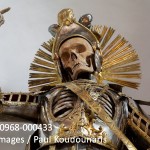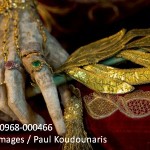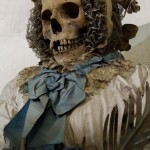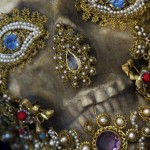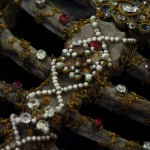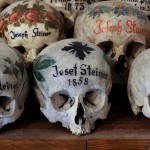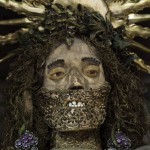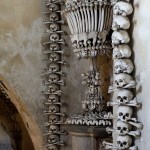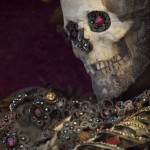When Death Comes Knocking…
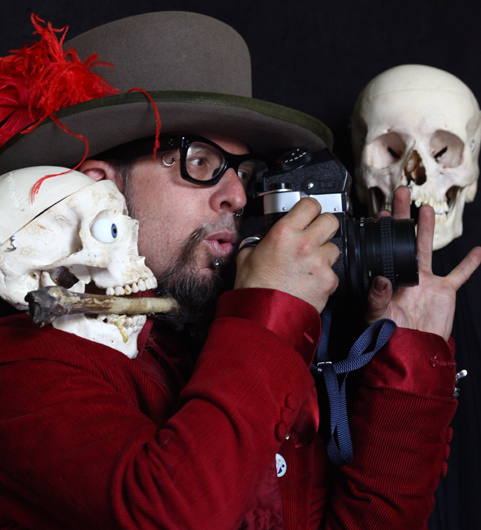
It is not every day that I receive an email with the somewhat surprising opening line “Hello, I am a photographer and writer who specializes in the cultural reception of death”. My attention was instantly grabbed. Staring out at me from my computer screen were the skeletons of countless martyrs and saints; some draped in jewels, others dressed in elaborate costumes of silk brocade, wrapped in delicate gold lace, or clad in heavy armour. The images were mesmerising. The photographer was Dr. Paul Koudounaris from Los Angeles. Three months down the line, we at akg-images are proud to announce exclusive representation of this impressive photographic archive for licensing worldwide.
After completing a PhD in Art History at UCLA in 2004, Koudounaris embarked on a very ambitious project to photograph every site on earth decorated in human bones. He travelled across four continents in his quest to document some of the world’s most opulent charnel houses, ossuaries, and bone-decorated shrines. In addition to such famous sites as the Catacombs of Paris, the Capuchin Catacombs of Palermo or the Sedlec Ossuary in the Czech Republic, Koudounaris has gained access to sites not previously opened to the public.
The subject matter of the resulting photographs is highly compelling. From painted skulls and bejewelled skeletons to awe-inspring chandeliers made entirely from human bones, there are many wondrous sights to be found amongst Koudounaris’ photographic work. These photographs succeed in reminding us of our own mortality and humankind’s innate desire to leave a lasting legacy after death. I challenge you not to be fascinated, moved, or at least slightly disconcerted by the piercing glances of St. Gratian, St. Pancratius and co.
You might expect such skeletons to serve as rather unproblematic photographic subjects, given that they are both immobile and unlikely to complain about unflattering portraiture, yet a number of hurdles almost prevented Koudounaris from capturing some of these characters on film. Many photographers will have had to battle with awkward angles, poor lighting conditions, or bureaucratic red tape during their careers. Few will have had to go to such extreme lengths to get that perfect shot. A particularly tricky photo shoot in Austria required Koudounaris to suspend himself upside down from a post and photograph his subject through a hole in the ceiling. In order to avoid any daytime glare from the reflected sunlight, this operation had to be carried out in the dead of night. Perhaps unsurprisingly, such activity caught the attention of the Austrian police, who duly arrested the photographer on suspicion of trespassing. It was only once his identity and legitimacy had been confirmed at the local police station, that Koudounaris was able to return to his photo shoot. Amusingly, the authorities felt so guilty for having interrupted his work that they sent a couple of officers along to hold the camera equipment in place whilst the photographer resumed his acrobatic pose!
Such stories perfectly sum up the passion and dedication with which Koudounaris approaches his photography. The result is a truly remarkable photographic archive, unique in its kind. I invite you to study and admire the selection of photographs below. Should you wish to delve deeper into the histories and myths of these saints and relics, I can highly recommend for further reading: The Empire of Death (Thames & Hudson, 2011) and its long awaited follow-up book Heavenly Bodies (Thames & Hudson, out this autumn).
